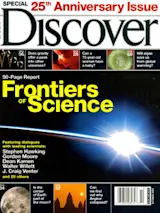Answers to some of the biggest questions in physics are hanging by a thread in a laboratory at the University of Washington in Seattle. The thread is made of tungsten and measures a bit over 30 inches long and less than one-thousandth of an inch thick. It is part of a tabletop instrument called a torsion pendulum, which can measure gravity’s strength across small distances with unprecedented accuracy.
Although the behavior of gravity acting on large bodies and over long distances is well understood, what gravity does between small objects at very small distances is uncharted territory. No one even knows if Newton’s laws (which state that the pull of gravity varies in proportion to the square of the distance between two objects) still hold at that level. Raman Sundrum, a theoretical physicist at Johns Hopkins University, is betting that they do not. If he is right, the Seattle experiment ...














